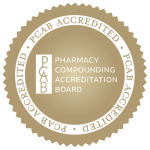You are a caring and successful health care professional that sees patients in pain. Many patients have many kinds of pain and to treat it you’ve assessed the following:
• The cause of pain, its intensity, its expected duration, and the possible complications related to it.
• Patient’s age, gender, medical history, other medications, allergies, etc. for the pain related condition’s prognosis.
• The treatment plan based on these findings, and, out of the many available options, you decide to prescribe transdermal compounded pain medication because you already know about its many benefits.
How do you choose/create the best transdermal pain formulation for your patient?
The simple and direct response would be: the best transdermal pain medication for your patient is the one that meets your patient’s needs.
And the conversation continues: True, but how do you determine that?
The answer comes with more questions: What aspect of the pain is most important to the patient? Is it efficacy, safety, affordability, insurance coverage, or convenience?
Let us take a brief look at each of these aspects.
Efficacy – you have confidence that the medication will be effective because you know that the selected active pharmaceutical ingredients (API’s) work when taken orally.
Safety – how much systemic absorption will the compounded transdermal medication have? This is one of the most common questions asked by prescribers regarding compounded
transdermal medication.
The answer is complex and it depends on many variables:
- Selection of the base as a delivery system
- The amount and concentration of each API applied at a time
- The frequency of applications correlated with the half-time of the API’s
- The molecular weight of the API’s
- Ionization of the medication
- Thickness of the skin
- Integrity of the skin
The logical approach to estimate the safety profile for transdermal absorption will be based on extrapolating 100% bioavailability compared to the oral dosing protocol of the API’s, bearing in mind first pass metabolism. In any new formulation, an initial safe dose can be determined in this manner and then, if necessary, it can be titrated up or down based on each patient’s therapeutic response. The manifestations of unpleasant side effects are less common, but another element to watch for and can be used to adjust the dose accordingly.
Affordability – as everything has a price, it is easy to assume that customized anything will be more expensive. It is not the case with compounded medications in most cases. When compounded medications are formulated and prepared with each patient’s unique needs in mind the medication contains many medications combined into one final transdermal preparation. Additionally, it is designed to provide the best results and minimize the chance for side effects. The cash price for the compound is usually equal to or less than the copayment of one of the medications incorporated into it, especially if the individual drug was to be covered by insurance.
Insurance coverage – Most insurance companies do not fully understand pharmaceutical compounding and it is easier for them just to deny coverage for the custom prepared medication.
Convenience for the patient – this is a very important aspect when deciding the treatment plan. Most often, patients with chronic pain develop secondary medical conditions because of long-term use of oral pain medications. If they started with one or two drugs for their pain, shortly they will need more drugs to treat the side effects and the chain can only grow from that point. Many drugs mean many different schedules for administering them, more confusion, more expenses, and less compliance.
Transdermal compounded pain medication, combining two or more API’s improves efficacy, reduces side effects, reduces confusion, and can reduce expenses. It is more convenient to use and it helps to improves adherence.
In conclusion, the best compounded transdermal pain medication for your patient will be as unique as your patient. When all these aspects are taken into consideration it will serve to meet your patient’s specific needs. It is difficult but not impossible to do so. Many times, you may need help from an experienced and knowledgeable compounding pharmacist, to help you with creative compounded solutions for your difficult to treat patients.Contact any of HALDEY’s expert compounders for your practice’s compounding needs.
References:
Finnerup NB, Otto M, McQuay HJ, Jensen TS, Sindrup SH. Algorithm for neuropathic pain treatment: an evidence based proposal. Pain. 2005 Dec 5;118(3):289-305. Epub 2005 Oct 6.
Simon PA, Terzian CG. Skin reactions to topical aminophylline. JAMA. 1995 Jun 14;273(22):1737-8
Sindrup SH, Jensen TS. Efficacy of pharmacological treatments of neuropathic pain: an update and effect related to mechanism of drug action. Pain. 1999 Dec;83(3):389-400.
Lynch ME, Clark AJ, Sawynok J, Sullivan MJ. Topical 2% amitriptyline and 1% ketamine in neuropathic pain syndromes: a randomized, double-blind, placebo-controlled trial. Anesthesiology. 2005 Jul;103(1):140-6.
Sawynok J, Reid A. Peripheral interactions between dextromethorphan, ketamine and amitriptyline on formalin evoked behaviors and paw edema in rats. Pain. 2003 Mar;102(1-2):179-86.
Kopsky DJ, Hesselink JM. High doses of topical amitriptyline in neuropathic pain: two cases and literature review. Pain Pract. 2012 Feb;12(2):148-53. doi: 10.1111/j.1533-2500.2011.00477.x. Epub 2011 Jun 16.
Kopsky DJ, Keppel Hesselink JM. Neuropathic pain as a result of acromegaly, treated with topical baclofen cream. J Pain Symptom Manage. 2013 Oct;46(4):e4-5. doi: 10.1016/j.jpainsymman.2013.07.011.
Roth SH, Fuller P. Diclofenac topical solution compared with oral diclofenac: a pooled safety analysis. J Pain Res. 2011;4:159-67. doi: 10.2147/JPR.S20965. Epub 2011 Jun 3.
Grace D, Rogers J, Skeith K, Anderson K. Topical diclofenac versus placebo: a double blind, randomized clinical trial in patients with osteoarthritis of the knee. J Rheumatol. 1999 Dec;26(12):2659-63
Chizh BA, Headley PM. NMDA antagonists and neuropathic pain–multiple drug targets and multiple uses. Curr Pharm Des. 2005;11(23):2977-94.
Mazières B, Rouanet S, Guillon Y, Scarsi C, Reiner V. Topical ketoprofen patch in the treatment of tendinitis: a randomized, double blind, placebo controlled study. J Rheumatol. 2005 Aug;32(8):1563-70.




